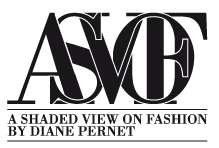Dear Shaded Viewers,
Dubai’s Design District satellite event Meet d3 brings colossal excavations to their national heritage gowns, especially focusing on the Emirate dress and its various interpretations over the past fifty years. Profiting from Dubai as the latest cradle – baby bed – for mega expanding luxury houses, local designers melt into their side effects and add a historical coordinate that all visitors should know. Nowadays we can all point where this monarchy is but costume-wise the Emirati women’s wardrobe belongs to the rich Encyclopedia of Mystery and Opulence.
Anthropology of Design (AOD), a Dubai based fashion laboratory was the one in charge of documenting and registering the three-day story, telling the fortune behind this cultural mine (not gold). I guess it’s a hard job for designers to analyze the Emirati dress, as there’s an invisible emotion around the women themselves. It’s the culture that they hold and there’s no microscope that will make it visible. A kaftan that absorbs the silhouette of a cape, double pleated to give a higher social status; it’s all about designing hybrids out of historical archives. Alternating the use of fabrics supplied by the most prestigious international producers and ending up in ready-to-wear garments easily compares to contemporary global offerings. Designed for the internal UEA markets or exports, this newly renewed style has sharp potential for success in other continents.
The referential lustrations here belong to the book Sultani: Traditions Renewed, Study of UAE Women’s Traditional Dress during the reign of Sh. Zayed bin Sultan Al Nahyan (1966-2004) by Dr. Reem El Mutwalli, and come highly recommended and signed by artist Hayv Kahraman (Baghdad, Iraq 1981). It’s here where the emotions of gowns have been important in preserving the status of indigenous women in the UAE.
Already a beautiful reason to get lost in the book, discovering the new Arab-Islamic women who inevitably become a world reference of beauty simply adds to this.
Today the city’s skyline is not strictly drawn with oil wealth (discovered in the late 60’s), the future is based on historical and ethnic contexts told to tomorrow’s viewers. As we all hope to involve their magic female presence.
Best,
MHM.
MEET D3.
DUBAI DESIGN DISTRICT.
Image 0: Jewellery, women’s ornaments of life. Centre left a woman wears an assortment of ten different silver rings accompanied by a bracelet on each arm. The round silver discs on the long necklace, evaporates wealth shaped as coins. Both Emirati women wear traditional coloured dresses (kandurah), black cotton head covers (shaylah) and large extended facemasks (burghu). Somewhere near the Al-Ain region.
Image 2: This is how an al-ghishwah headscarf is worn. Indoors a fully gowned woman sits with a headscarf impeccably on the floor, seeming loyal to her burghu and ghishwah on a typical manner when meeting with strangers of both sexes.
Image 5: An early coloured photo documenting the simple headscarf shaylah niduwah used as a general body cover, on top of her cotton printed miraysi type, the kandurah is decorated with silver and gold machine embroidery or khwar. Holding her prayer beads and her burghu is just the right length for her age to show piety.




